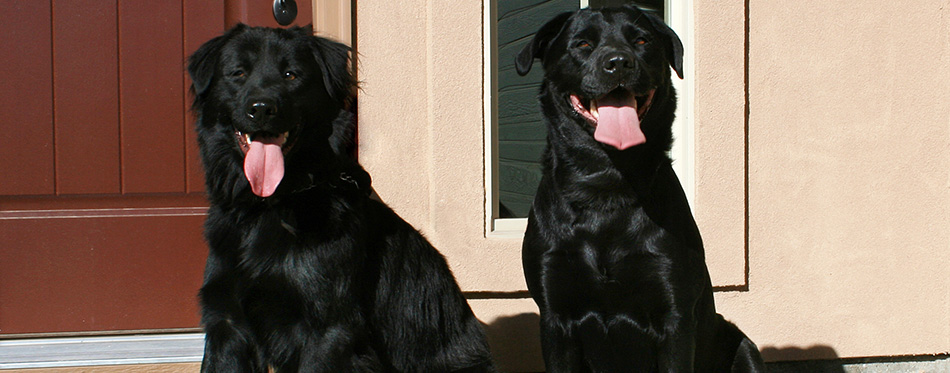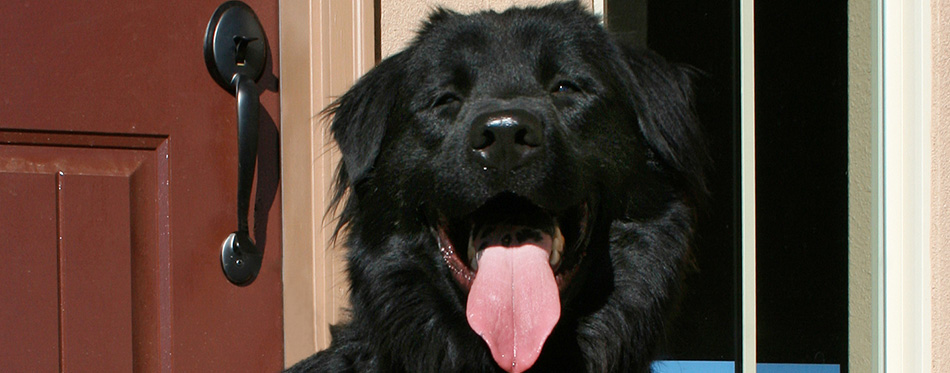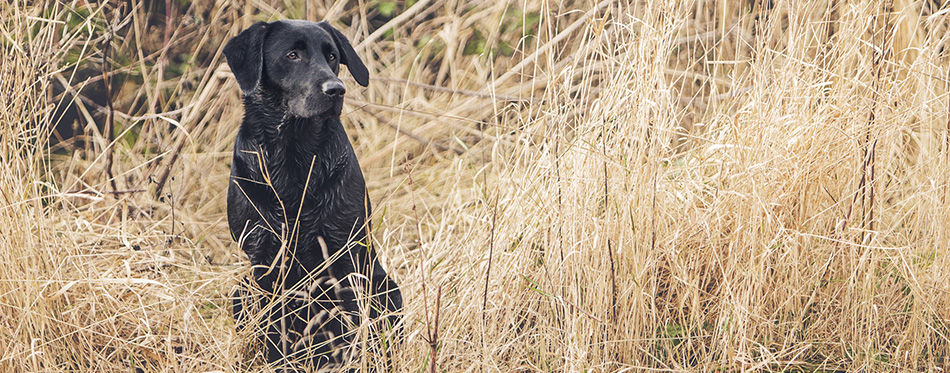With cross-breed dogs becoming ever more popular, it seems every day, we are hearing about new, different combinations of pedigree dogs that stretch beyond the, frankly, now quite ordinary cockapoo. With a growing number of unique and interesting mixes appearing, it can sometimes be confusing to even decipher what breed the parent dogs may be. So today, we’ve decided to shed some light on any confusion dog lovers may have, surrounding a rather rare cross-breed that is gaining popularity. Say hello to the adorable Chabrador.
What is a Chabrador?
So first things first, what actually is a Chabrador? They are a mixture of the pure breeds of the Chow Chow and the always popular Labrador. Sometimes know as the Chowbrador, these unique little dog is gaining prevalence in the dog loving community.

History of the Chabrador
This sweet, big furry beast is what is known as a designer dog breed, a purposeful hybrid of two purebred parent dogs to create a unique crossbreed with a mixture of traits from both dogs. There is no specific history of the Chabrador itself, however, we can look at both the Labrador and Chow Chow for more information on this breed.
Let’s start with the Chow Chow’s history – a dog with a rich and interesting heritage. The Chow Chow is an ancient breed from Asia and was not given its name until it was introduced to England during the 18th century. There is some ambiguity around its origin, no one is quite certain how long this breed has been around or whether they first came from China, Mongolia or Siberia, however, there are accounts and artworks dated from thousands of years ago in China that appear to depict the Chow Chow, so many believe this is where they originated.
Known by many different names, Chow Chows were used as hunting dogs and temple guards, due to their cautious, proud nature and skills at scenting. However, the name Chow Chow appears to have first come from the ship there were imported to England on in the 1700s, where they were registered as curiosities or curios under the Chow Chow. They gained popularity in England in the 1800s and by the time the 1900s had arrived, the Chow Chow was just as popular in the United States and was soon recognised by the American Kennel Club in 1906.
The Labrador is not as ancient a breed as the Chow Chow, but they still boast an interesting history. Most experts agree that the earliest ancestor of this popular breed is the St John’s dog, a 16th-century water dog. Sadly, this breed became extinct in the 1800s. Very similar looking to the Labrador Retriever we know and love today, the St John’s dog has an oily, short coat and was a great swimmer. They would often work alongside fisherman in Newfoundland and, just like the beloved Labrador, were retrievers. They would dive into the water in order to fetch ropes, nets and even fish! These days, working Labradors tend to retrieve waterfowl.
In the 1800s, two men who bred St John’s dogs to be gun dogs named Walter Scott and James Harris met whilst out shooting. Harris gave two male retrievers to Scott, who then went on to breed them with his own dogs. The puppies of this litter went on to be the ancestors of the modern-day Labrador.
Who are the Chabrador’s Parents?
The Chabrador’s parents are very different in terms of appearance, personality and temperament, so naturally, this makes for an interesting puppy with unique traits and looks. Let us learn more about the Chabrador’s purebred parents, the Labrador and the Chow Chow.
Labrador
Labradors are incredibly popular dogs, in fact, in the UK, they consistently top the list of the nation’s favourite breed and are truly adored across the United States, and for good reason. These loveable pooches are cute and cuddly to look at and have the sweetest temperament of all the dogs, making them perfect for small children, elderly people and families. Sweet natured and playful, the Labrador is affectionate to all and just a little bit docile, making them an ideal pet for all.
Because of their pliable and amiable nature, Labradors have always worked alongside we humans. One of the most popular jobs a Labrador holds down is that of a guide dog. This is one of the most important roles a dog can be honoured with, as it allows people who have lost their sight to navigate the world in a safe and accessible way. Without guide dogs, blind people or those who have limited sight would live a lonely and incredibly restricted lifestyle. Above all, Labradors love to please their owners, this personality trait makes them the perfect candidate for many different useful jobs.
Labradors may love to relax on the sofa with their owners, but they also need a whole lot of exercise. If you live in an apartment with little to no garden space, a Labrador is not a great option for you. They love to run and play, and because of their large frame, if they are not given sufficient exercise regularly, they can become overweight very easily.
The Labrador is a stunning, beautifully natured dog breed with a heart of pure gold. No matter what dog you choose to mix them with, the puppy is sure to pick up the lovely personality traits of this wonderful breed.
Chow Chow
The Chow Chow is a less popular dog breed than the Labrador, but it is still a great dog in its own way. However, they could not be more different than the cuddly, friendly Labrador, they are often described as the ‘cat inside a dog’s body’ breed. They are fiercely independent and rather cautious of strangers, so if you are on the lookout for a pally furry companion, the Chow Chow is probably not the best choice.
They are very striking looking dogs, with their large mane and puffy tail, a Chow Chow is instantly recognisable and turns heads wherever it goes. They are originally Northern China, and are known as Songshi Quan, which literally means ‘fluffy lion’ – and it is not exactly hard to see why! They are beautiful dogs and you may be tempted to give lots of fuss to one when you see them in the street, however, do be careful, they are quite aloof and potentially aggressive to strangers, so always ask their owner’s permission before giving them attention.
In contrast, they are very loyal and attentive to their owners, although they don’t always like showing it. Chow Chows aren’t fans of cuddles or hugs, a simple stroke and pat will be quite enough for them.
They do need exercise, however, they are not the fastest dogs out there. Their build is not designed for speed, so if you are an avid runner and are looking for a dog that can accompany you, the Chow Chow should not be your first choice. Because of their territorial nature, they do make great guard dogs as they are naturally wary of those they don’t know.
An extremely noble and proud breed, the Chow Chow distinctive looks and proud personality make it a unique friend for anyone searching for a special, furry companion.
The Temperament of the Chabrador
With such differing personalities in the parent dogs, it can be difficult to predict how the temperament of your Chabrador puppy is going to be. As with all cross breeds, the mixture of traits can vary greatly, but there are certain things you can expect from your brand new Chabrador. This dog is often extremely energetic, loyal and rather affectionate.
The happy go lucky nature of the Labrador tends to come to the fore with this dog, overshadowing the often aloof attitude of the Chow Chow. However, if you are lucky, the wariness of strangers that comes from the Chow Chow will appear in your dog, meaning they will still make a fine guard dog, should anyone unknown to them approach your home. They are usually calmer than Labradors and more friendly and outgoing than the Chow Chow, but of course, each individual dog is different.

The Appearance of the Chabrador
The parent dogs of this cross breed are wildly different, so what on earth would the puppy end up looking like? Similar to the temperament, you cannot predict how the visual traits of each dog will show themselves in the pooch. For example, the pup could end up looking more like a Labrador or more like a Chow Chow, or an equal mixture of both.
As a rule, both the physical traits of Labrador and the Chow Chow will be able to be distinguished from a Chabrador, particularly once they have grown into adulthood. Typically, the Chabrador will be a medium to large sized dog with lots of fluffy, coarse fur, which comes from the Chow Chow. However, instead of having a short snout, they may have a longer face, similar to a Labrador. They are usually around 18 to 24 inches tall and weigh up between 50 to 80 pounds. They will often live between 9 and 12 years, which is slightly shorter than average for medium sized dog breeds.
Things You Should Know About the Chabrador
This unique and interesting hybrid dog breed has its own quirks, needs and requirements of care. Before deciding to purchase or adopt one, you should consider carefully whether you are able to give them the attention it needs to be a happy and healthy dog. Do you have a big enough garden or outside space for your Chabrador to exercise in? Do you have what it take to train this strong-willed and sometimes, quite difficult, pooch? Take a look down below at all the things you need to know about the Chabrador before bringing one into your life and family.
Training a Chabrador
All dogs have their own unique personalities, so training should be personalized to your dog’s needs. You know your pooch better than anyone, so apply this advice to your individual situation with your dog. The Chabrador has the potential to pick up the independent and stubborn nature, so training can be quite difficult at times. The trick to this is to be firm, persistent and fair.
You will need to socialise your Chabrador from an early age, not just with other dogs, but with humans too. The Chow Chow is known to be wary of strangers, so if you can get them used to other people, then perhaps you help bring out some of the Labrador within them innate friendliness.
Whilst you need to come across at the alpha in your relationship with your Chabrador, you should definitely avoid shouting, smacking and confrontational tools such as shock collars, as these can lead to issues with aggression. However, rewarding them for good behaviour with a clicker, treats and lots of fuss will encourage them to be on their best behaviour.
Common Health Issues With the Chabrador
In most cases, cross breed dogs tend to be healthier than purebred. This is down to the fact that purebred canines have been bred in such a way that their genetic makeup is often weaker, because in order to achieve the ‘ideal’ breeding standard, dogs with certain attributes, such as a short-snouted face, are bred together. Unfortunately, this can leave them with health issues and weaknesses. Usually, hybrid pooches can bypass these problems, however, there are a few issues the Chabrador may pick up from its parents.
It should be noted that the Chabrador does not have any specific known health problems, but both the Chow Chow and Labrador can suffer from several different issues. Both the Chow Chow and Labrador can often struggle with hip and elbow dysplasia, a common ailment for many larger framed dogs. Because of their deep-set eyes, Chow Chow can suffer from eye diseases, such as glaucoma, corneal dystrophy and cataracts.
Does the Chabrador Need Much Exercise?
Well, because their parents are both big dogs and need plenty of exercise, you can pretty much take an educated guess that a Chabrador will need a healthy amount, too! They will need daily, long walks and ideally, a place where there can burn off excess energy, such as a large garden. They love to run off the lead and play with other dogs, this will keep them both mentally and physically stimulated. You should not get a Chabrador if you do not have a big garden where they can exercise at their leisure, however, if you do end up with one of these lovely dogs and don’t have a vast outside space for them, make sure you have a dog field nearby that you take them too regularly. Chabradors often like to swim, so if you have a lake near your home, why not take them to it and let them splash around to their heart’s content.
How do I Groom a Chabrador?
This does depend on whether your pooch ended up with their Labrador parent’s smooth coat, the Chow how fluffy coat, or a mixture of both. If their fur is more like the Labrador, they will require much less grooming, but they will still need to be brushed regularly. On the other hand, if their coat is more like the Chow Chow, you have a lot more work ahead of you. If this is the case, their fur will be rather prone to matting, so do take care when brushing, as you can irritate and hurt your dog’s skin. For more options, check out our detailed reviews of dog grooming gloves and dog shedding brushes.
When it comes to bathing your Chabrador, it is fairly simple. They will need to be washed every one or two months, depending on how dirty they get. This is will largely depend on how mischievous your pooch is! Always use a shampoo that is specifically designed for dogs, you can find special ones for different kinds of fur as well to make it even more effective. Do not forget to trim their nails with a dog nail trimmer, don’t try to use a human one as you could end up hurting your dog. Find out more about dog shampoos and dematting tools for dogs here.
If you are not sure what kind of coat your dog has or how you should groom them, the best thing to do is take them to a professional groomer. A reputable groomer will be able to identify what treatments, products and haircut will suit your Chabrador, and will be able to pamper your dog perfectly.

The Diet of a Chabrador
Both the Labrador and the Chow Chow have a tendency to overeat and suffer from obesity, so it stands to reason that a mixture of both these breeds will be prone to struggle with weight issues if not carefully monitored. Too many treats are the downfall of many dogs, it is so easy to overdo it with dog chocs and gravy bones, but remember, spoiling your pooch is not wise and in the long run, they will not thank you for it. A treat every now and then is absolutely fine, but you should aim to stick to a diet plan with your dog and adhere to it as closely as you can.
For this breed, four to five cups of a high-quality dog food three times a day will be sufficient. Instead of giving your furry pal processed treats, why not make your own healthy snacks, or give them fruits and vegetables to chomp on? Just be sure that the ingredients and veggies you use are completely safe for dogs before treating them. You may also like our article on dog food for labs.
Quick Facts
- Hybrid of Chow Chow and Labrador Retriever
- Lifespan of 9 – 12 years
- Energetic, loyal and outgoing temperament
- Needs plenty of exercise
- Medium to large sized dog

